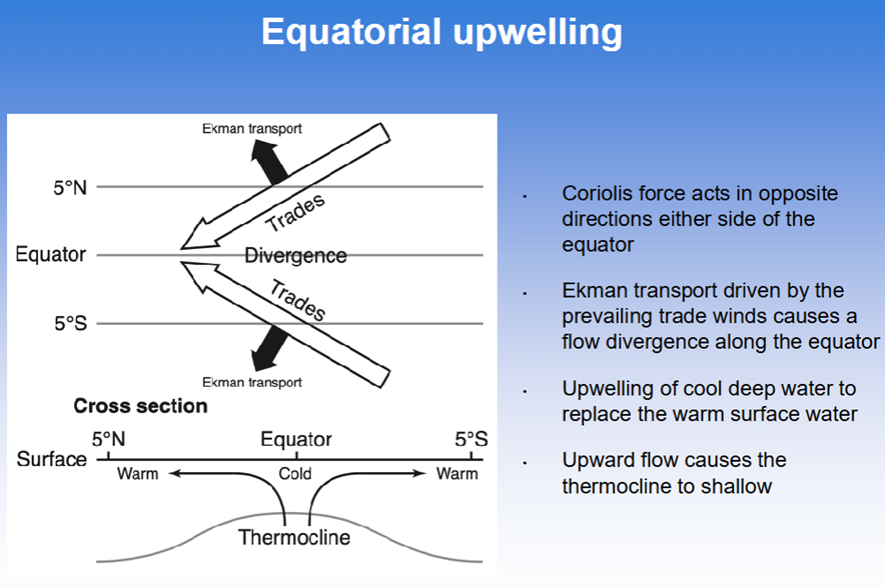Earth SYstems Lecture 19-20
1/12
There's no tags or description
Looks like no tags are added yet.
Name | Mastery | Learn | Test | Matching | Spaced |
|---|
No study sessions yet.
13 Terms
Quantifying geostrophic flows
1) Pressure gradient force: Force generated by horizontal differences in pressure
2) Coriolis force: Apparent force that results from observing the motion of an object from within a rotating reference frame (such as from the Earth)
3) Geostrophic flows: Flows in which the pressure gradient force is balanced by the Coriolis force
Pressure in the Atmosphere and Ocean
Atmosphere
~105 Pa (= 1 bar = 1000 mbar) at sea level
Pressure decreases approx. exponentially upwards
Initially decreases by ~1 mbar* every 10 m
Ocean
Pressure increases approx. linearly downwards
Increases by ~1 bar* every 10 m → Remember the hydrostatic equation!
*Density of seawater is roughly 1000 times the density of air at sea level
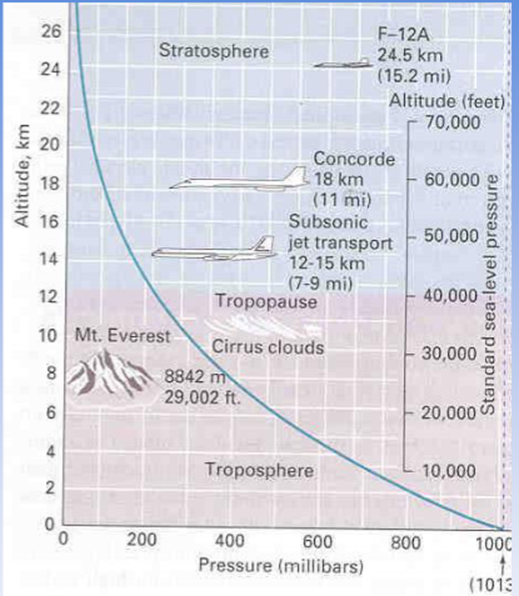
Isobars-
Atmosphere
Solar heating causes surface air density to decrease and thus expand
→ larger separation between isobars
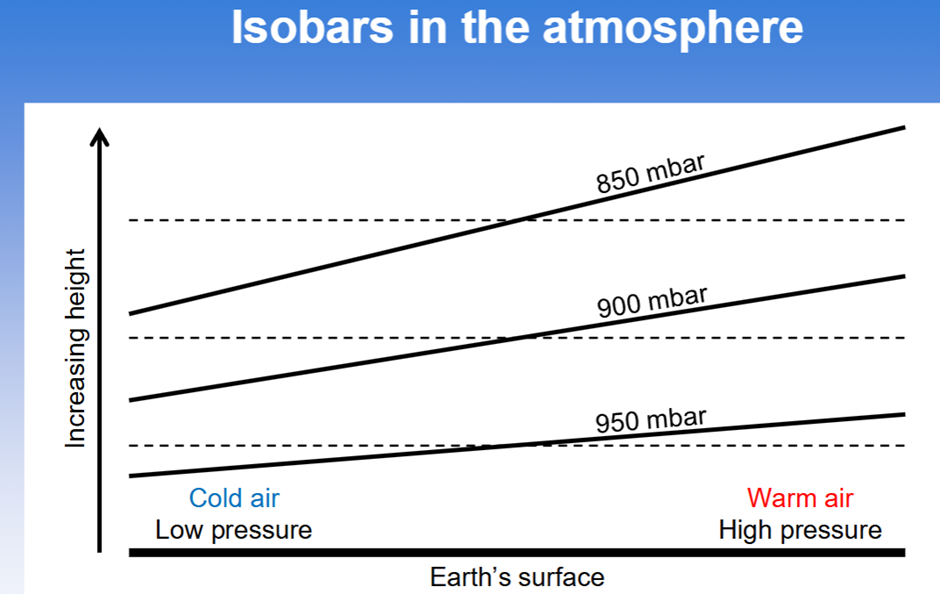
Ocean
Heating and precipitation causes surface water density to decrease
→ larger separation between isobars
More importantly, the sea surface is not flat! Where the sea surface is high all isobars are raised the same distance (separation remains the same)
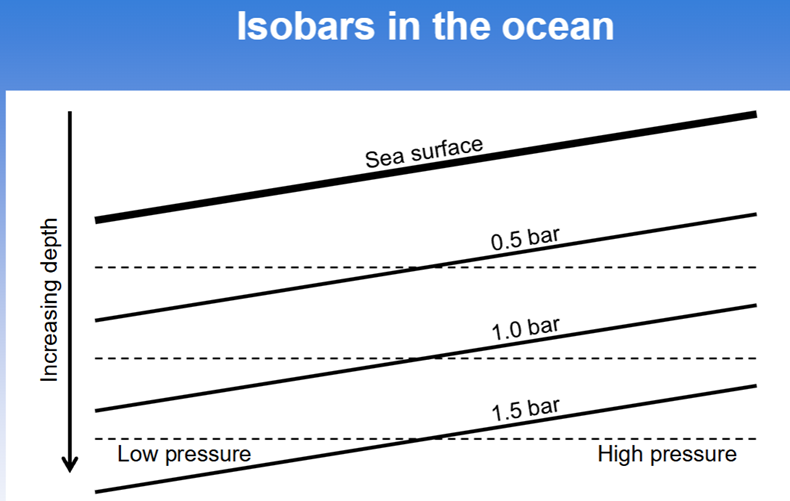
Pressure Gradient Force

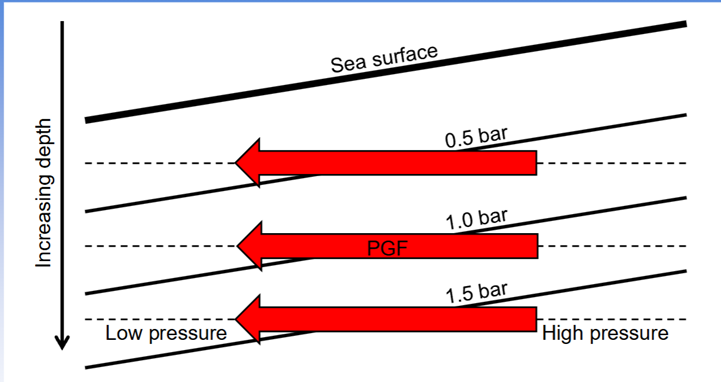
Calculating PGF
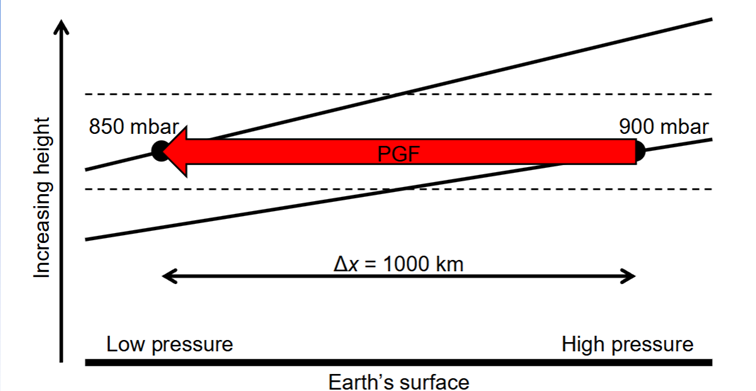

Pressure gradient force in the ocean
Assuming the ocean is uniform density, pressure gradient force is proportional to the slope of the sea surface
• Gently sloping sea surface and isobars → small PGF
• Steeply sloping sea surface and isobars → large PGF

Coriolis Force
Coriolis force is an apparent force that results from observing the motion of an object from within a rotating reference frame (such as from the Earth)
The ball below moves in a straight line relative to the universe, but follows a curved path when viewed relative to the rotating turntable
So too fluid moves in a straight line relative to the universe, but follows a curved path when viewed relative to the Earth while it rotates on its axis
When within a rotating reference frame, the deflection of moving objects is the result of the Coriolis force:
• Proportional to the speed of the object (zero when object is at rest)
• Acts perpendicular to the direction of object’s motion (90° to the right in the Northern Hemisphere, left in the Southern Hemisphere)
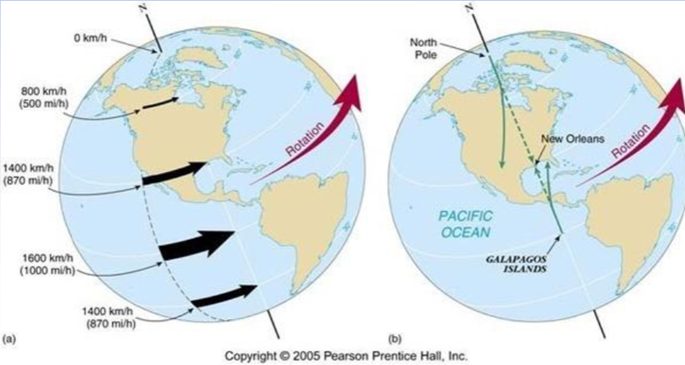
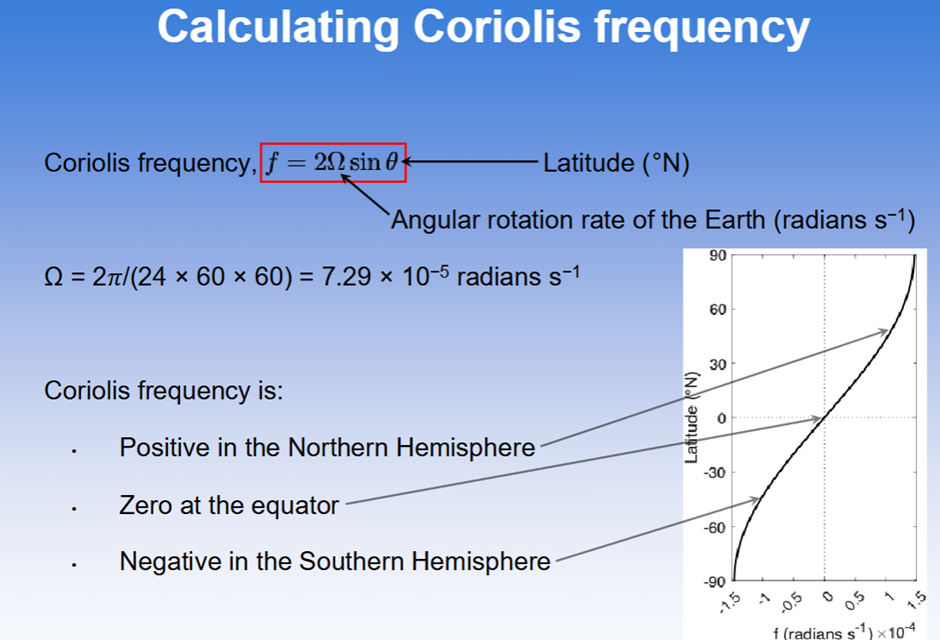
Coriolis force is Coriolis frequency multiplied by the velocity of the object (fv)

Geostrophic Winds and Currents
Geostrophic winds and currents are flows in which the pressure gradient force is balanced by the Coriolis force
• Net force is zero so no acceleration (Newton’s first law of motion)
→ flow is at a constant speed (said to be in steady state)
Direction of the flow is perpendicular to both the pressure gradient force and the Coriolis force
• Flow to the right of the PGF in Northern Hemisphere (N. H.)
• Flow to the left of the PGF in Southern Hemisphere (S. H.)
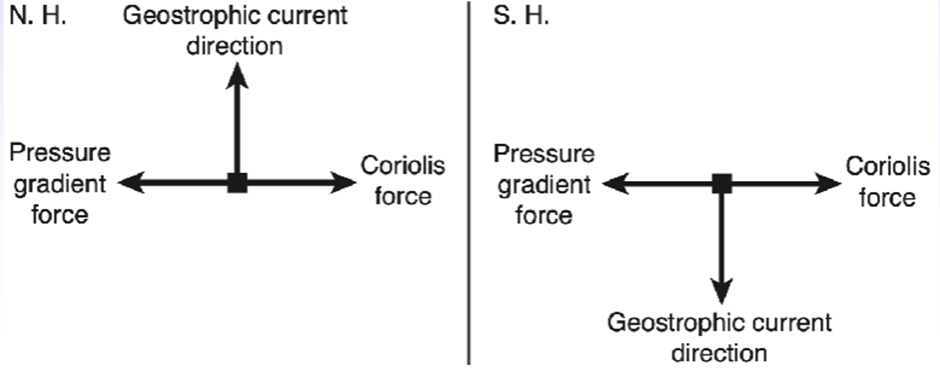
Speed of the geostrophic wind or current is proportional to the PGF (for a fixed latitude and Coriolis frequency)
• Gently sloping sea surface (or isobars) → small PGF → slow geostrophic flow
• Steeply sloping sea surface (or isobars) → large PGF → fast geostrophic flow

Calculating geostrophic flow velocity
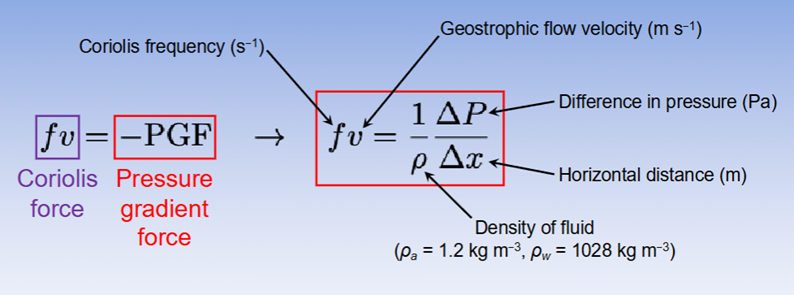
Ekman transport, gyres and upwelling
Effect of the wind on ocean circulation
Ekman spiral
Wind exerts a frictional force (wind stress) on the surface layer of the ocean

Initially the surface layer (surface to approximately 10 m) is pushed in the same direction of the wind
As soon as the water starts to move, Coriolis force acts on it and the current turns to the right (N. H.)
The surface layer exerts a frictional force on the layer beneath (just like the wind)
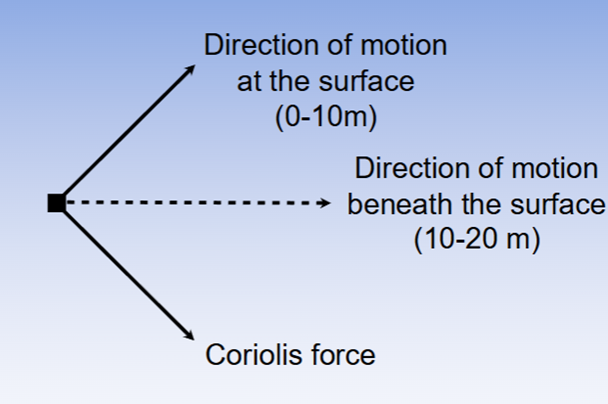
In this layer the current also turns to the right due to Coriolis force
And so on

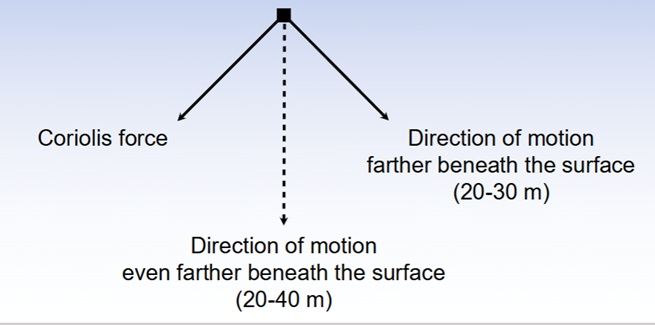
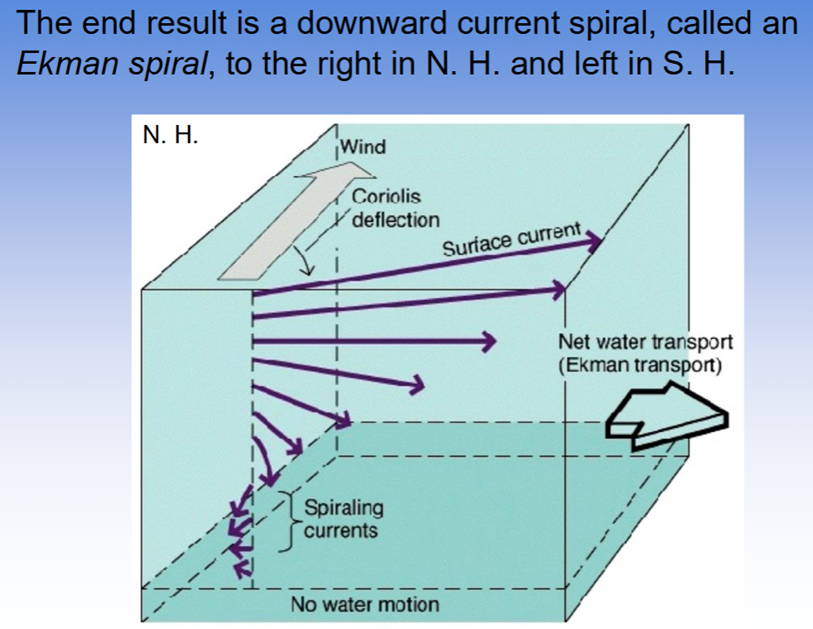
Ekman Spiral and Transport
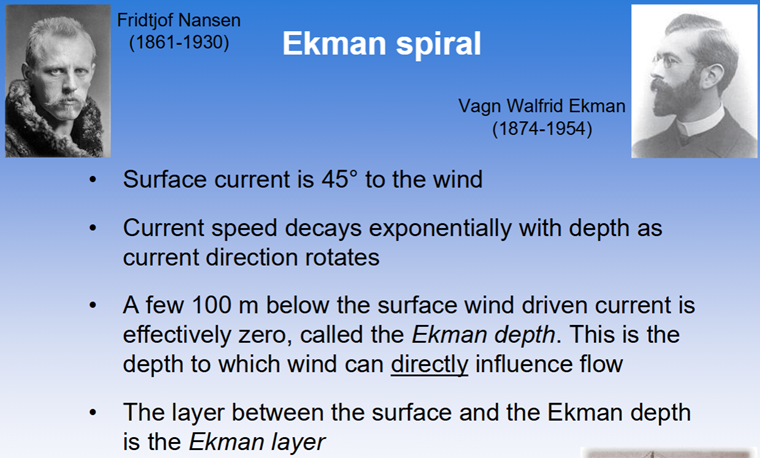

Observations of an Ekman Spiral

Ekman Transport around the Globe

Surface Ocean Circulation

Subtropical Gyres
Ekman transport explains the formation of the subtropical and subpolar gyres
• Prevailing winds over the subtropical ocean are Westerlies (W-E) at 45° and Trades (E-W) at 15°
• Ekman transport driven by these winds “piles up” water at the centre of the gyre, a flow convergence

• This “bulge” in sealevel at the centre of the gyre causes a horizontal pressure gradient force. It acts from the centre to the outside of the gyre
• The pressure gradient force is balanced by Coriolis force, resulting in a geostrophic current
• The geostrophic current circulates anti-cyclonically around the sealevel bulge
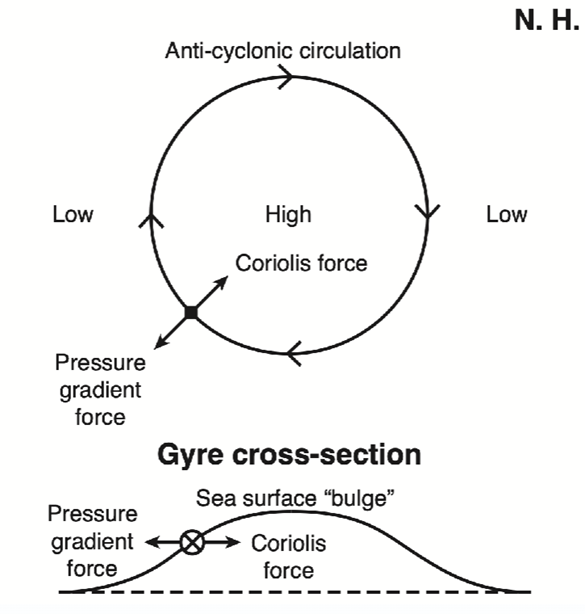
Subpolar gyres
• Conversely, prevailing winds over the subpolar ocean are Easterlies (E-W) at 75° and Westerlies (W-E) at 45°
• Ekman transport driven by these winds causes a flow divergence at the centre of the gyre
• This depression in sealevel causes a pressure gradient force from the outside of the gyre to the centre, again balanced by Coriolis force
• The resulting geostrophic current circulates cyclonically around the sealevel depression
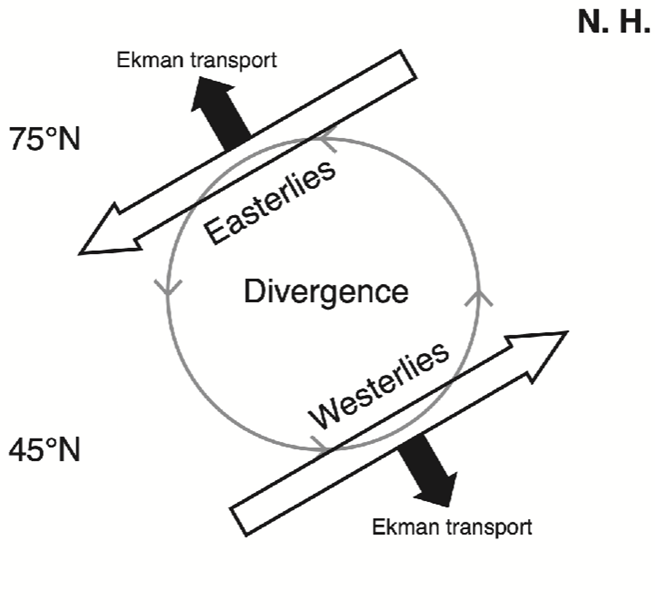

Ekman Transport and Gyre Circulation
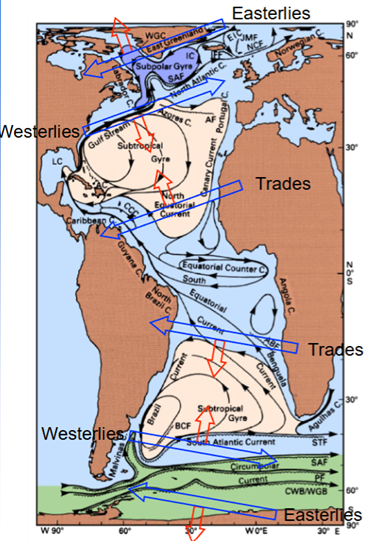
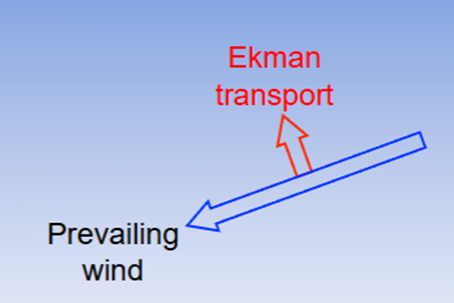
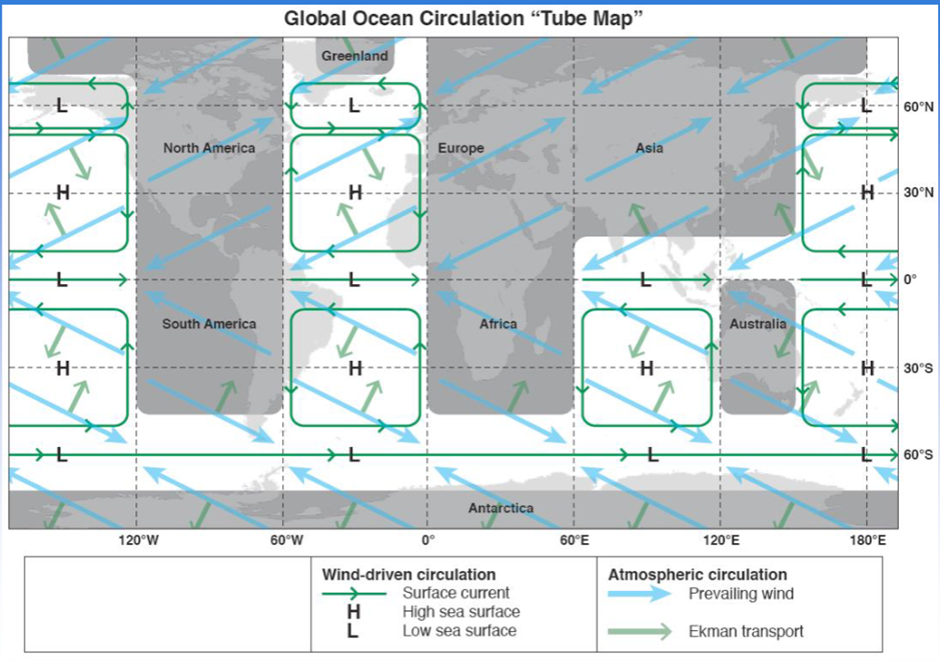
Coastal Upwelling
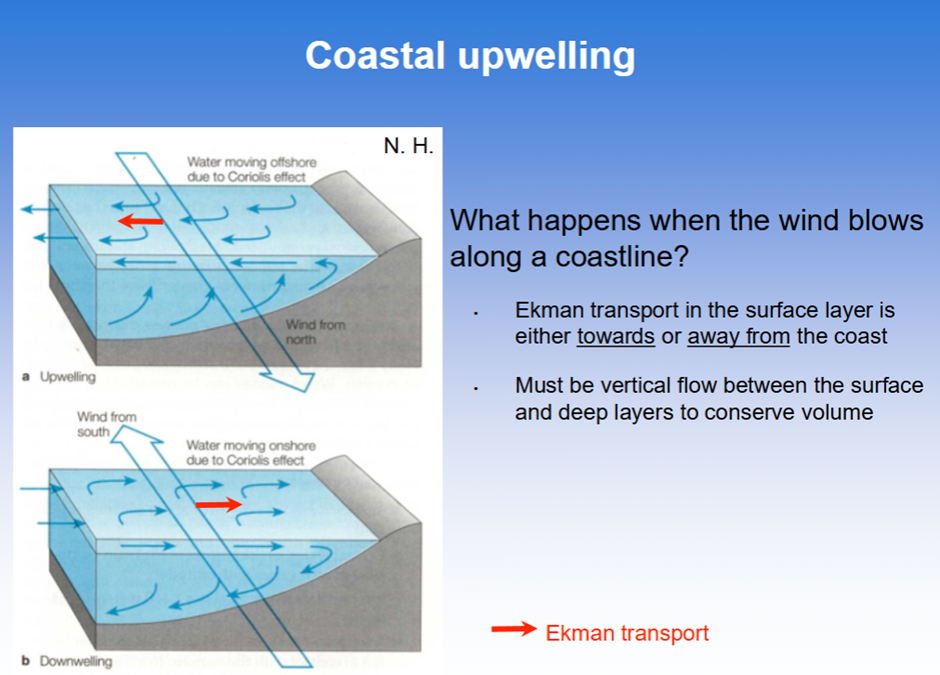
Upwelling vs Downwelling
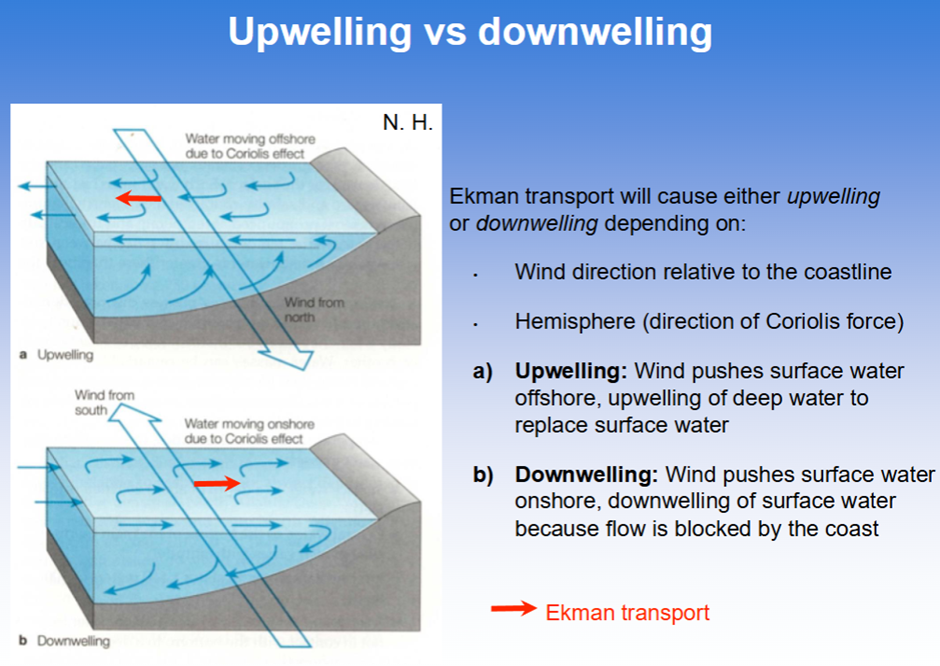
Why is upwelling important?
Upwelling brings nutrient rich water from the deep layer to the surface → into the photic zone
• The nutrients can then be utilised by phytoplankton in the normally nutrient-limited surface layer
• Primary productivity increases
• Increased biomass up the food chain (zooplankton, fish, etc.)
Upwelling regions are important commercial fisheries for species like sardines and anchovies
